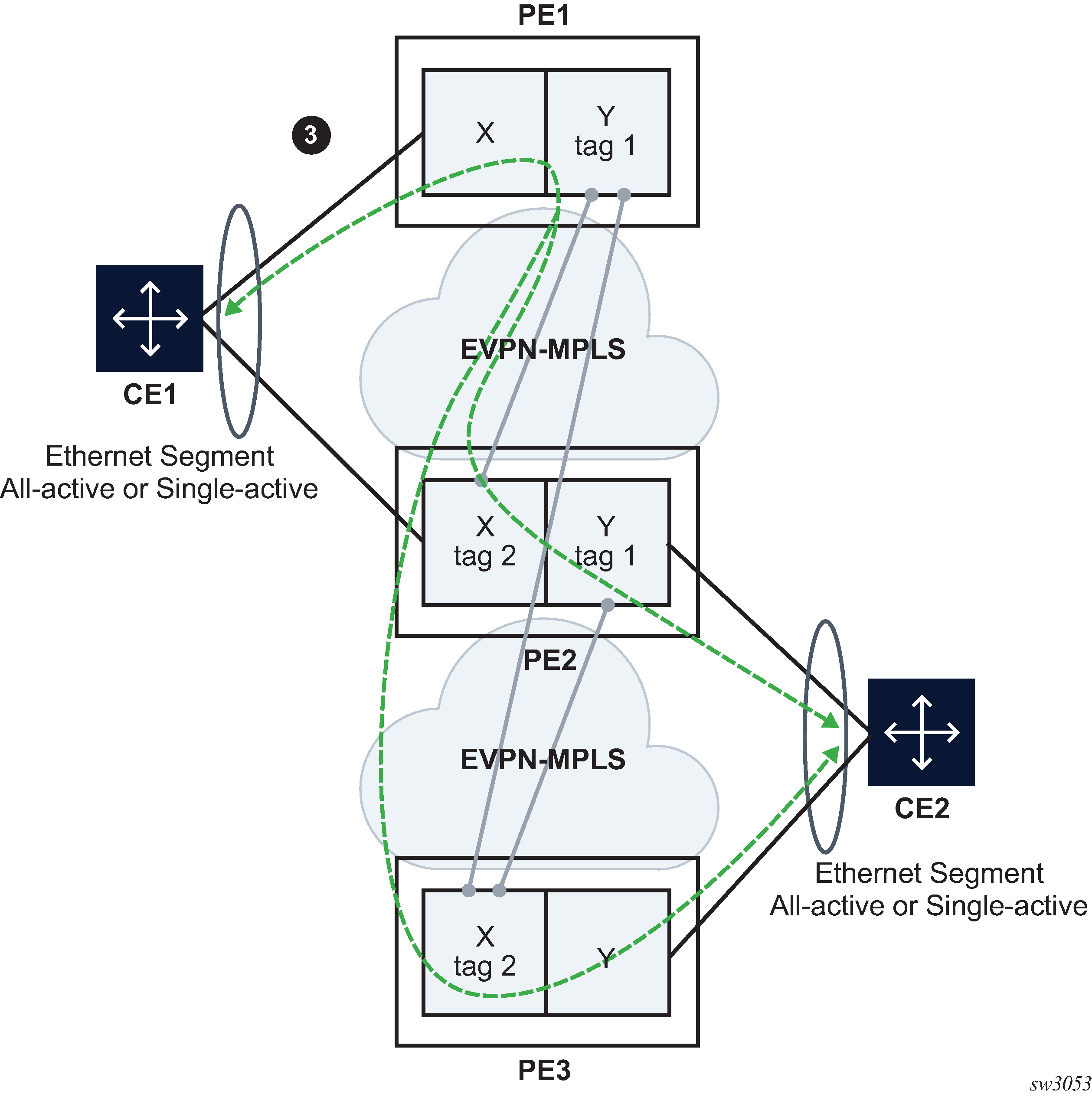The following figure shows an example of EVPN-VPWS endpoints.
Figure: EVPN-VPWS endpoints example 3

In Figure: EVPN-VPWS endpoints example 3, PE1 is configured with the following Epipe services.
bgp-evpn
evi 350
local-attachment-circuit "CE-1"
eth-tag 1
exit
remote-attachment-circuit "ICB-1"
eth-tag 2
exit
// implicit endpoint "Y"
mpls bgp 1
auto-bind-tunnel
resolution any
exit
no shutdown
exit
exit
sap lag-1:1 create
// implicit endpoint "X"
exit
In Figure: EVPN-VPWS endpoints example 3, PE2 is configured with the following Epipe services.
endpoint X create
exit
endpoint Y create
exit
bgp-evpn
evi 350
local-attachment-circuit "CE-1" endpoint "Y"
eth-tag 1
exit
remote-attachment-circuit "ICB-1" endpoint "Y"
eth-tag 2
exit
local-attachment-circuit "CE-2" endpoint "X"
eth-tag 2
exit
remote-attachment-circuit "ICB-2" endpoint "X"
eth-tag 1
exit
mpls bgp 1
auto-bind-tunnel
resolution any
exit
no shutdown
exit
exit
sap lag-1:1 endpoint X create
exit
sap lag-2:1 endpoint Y create
exit
In Figure: EVPN-VPWS endpoints example 3, PE3 is configured with the following Epipe services.
bgp-evpn
evi 350
local-attachment-circuit "CE-2"
eth-tag 2
exit
remote-attachment-circuit "ICB-2"
eth-tag 1
exit
// implicit endpoint "X"
mpls bgp 1
auto-bind-tunnel
resolution any
exit
no shutdown
exit
exit
sap lag-1:1 create
// implicit endpoint "Y"
exit
This example is similar to the Figure: EVPN-VPWS endpoints example 2 example, except that a third node is added. Nodes PE1 and PE3 have implicit endpoints. Only node PE2 requires the configuration of endpoints.